Scotland: The Birth of Geology
In July 2019 we led our Geology of Scotland tour for the fourth time. Scotland has incredibly diverse geology – it was here that the enormity of geological time was first envisaged, the first attempts to measure the mass of the Earth were made, Thrust Faults were discovered and middle Jurassic Dinosaurs roamed.

Day 1
Today was an arrival day. Participants came from the USA and France and we all met at an Edinburgh hotel conveniently located on the tramway mid way between the City Centre and Airport.
Day 2
Our Scotland “Birth of Geology” tour properly began today and we started with a bang! Siccar Point, arguably the most important geosite in the world, was where, in 1788, James Hutton stared into the abyss of time and the science of geology was born. We had lunch at the Forth Bridge World Heritage Site before moving on to Birnam where we saw the Highland Boundary Fault that separates the Lowlands from the Highlands, and Macbeth’s Oak in the relics of Birnam Wood. Our final stop of the day was the Queen’s View where we talked about Schiehallion mountain which, in 1774, was used to estimate the mass of the Earth for the first time by using a plumb line to measure its gravitational attraction. We then spent the night in Aviemore, in the Cairngorms National Park.
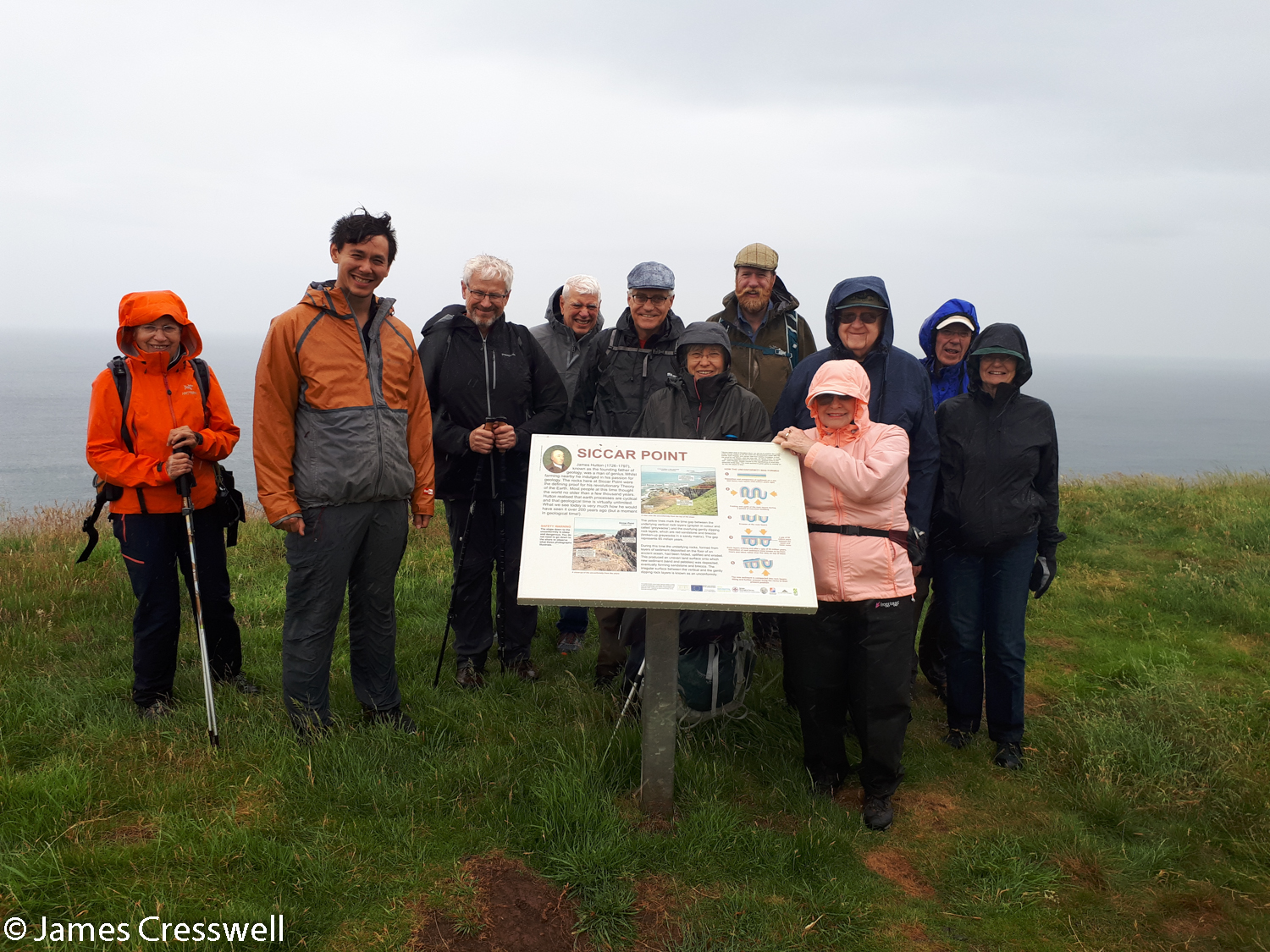







Please click on images to enlarge and to read the captions
Day 3
Our first stop of the day, after leaving Aviemore, was the Roche Moutonnées of Dulnain Bridge. We then travelled to Loch Ness to look for Nessie and to learn about the Great Glen Fault. Interesting fact: Loch Ness holds more water than all the lakes in Wales and England put together! The next stop was Lairg to learn about the Lairg Meteorite. It is possible that a gravity anomaly under Lairg is due to a meteor impact 1.2 billion years ago, and this impact is responsible for meteor impact ejecta that is found in sandstone on the Assynt coast (although a paper published in June 2019 suggests the crater may lie elsewhere……the jury is still out!) We then entered the UNESCO North West Highlands Geopark. We made several stops in the Geopark including the famous Knockan Crag where geologists Benjamin Peach and John Horne resolved the “Highland Controversy” by identifying the world’s first Thrust Fault – the Moine Thrust. The controversy existed because 1 billion-year-old metamorphic rock had been thrust over unmetamorphosed Cambrian sedimentary rock and the earlier geologists couldn’t understand how that could be. Murchison and Gieke thought the overlying rock had to be slightly younger than the underlying rock, while James Nicol and Charles Lapworth thought that somehow older rock was indeed overlying younger rock. We also saw imbricated thrust faults and a dyke at Stronchrubie cliffs and an unconformity where 1 billion-year-old Torridonian sandstone lies unconformably on 3 billion-year-old Lewisian gneiss. The night was spent in the small coastal village of Lochinver.










Please click on images to enlarge and to read the captions
Day 4
We spent an awesome day in the North West Highlands Geopark today. Our first stop was a view of the Foreland Mountains of Assynt, voted as number one geosite in the UK and Ireland by the Geological Society. Here wonderful mountains, made of 1-billion-year-old sandstone, carved out by Ice Age ice, sit on a a basement of 3 billion-year-old Lewisian gneiss. We then proceeded to the community of Clachtoll and Stoer where we saw a fossilised 1.2 billion-year-old landslide lying on the side of a 1.2 billion-year-old canyon cut into 3 billion-year-old rock!! Also nearby to this we saw sandstone containing glass fragments that came from a meteorite impact 1.2 billion years ago, with the crater possibly being at Lairg where we visited yesterday. The next stop was Glencoul where we saw the Ben More Thrust (part of the Moine Thrust zone) and how 3 billion-year-old Lewisian gneiss is thrust over Cambrian sediments, that themselves unconformably overlie Lewsian gneiss – hence the Cambrian rock is in a 3 billion-year-old Lewisian gneiss sandwich! We then reached the north coast of Scotland for lunch in Durness and a visit to Sango Bay. Here we saw amazing rocks called “Oystershell rocks” which are mylonites from the Moine Thrust. We also saw Lewisian Gneiss that was also mylonitic from being thrust over the Oystershell rock – amazing! We then turned south retracing our route through the Geopark and stopped at the fabled multi-coloured rock stop. Here, 3 billion-year-old tonaltic gneiss is cut by 2.4 billion-year-old aphibolite Scourie dykes and both are cut by a swarm of pegmatitic granite dykes, forming what is arguably the most beautiful outcrop in Scotland! Our final stop was Scourie, where we saw the famous ‘graveyard dyke’. This is the classic Scourie dyke, which is 40 metres wide and forms an embayment, because it is softer than the Lewsian gneiss it intrudes. We then drove on to the large coastal village of Ullapool, where we spent the night.


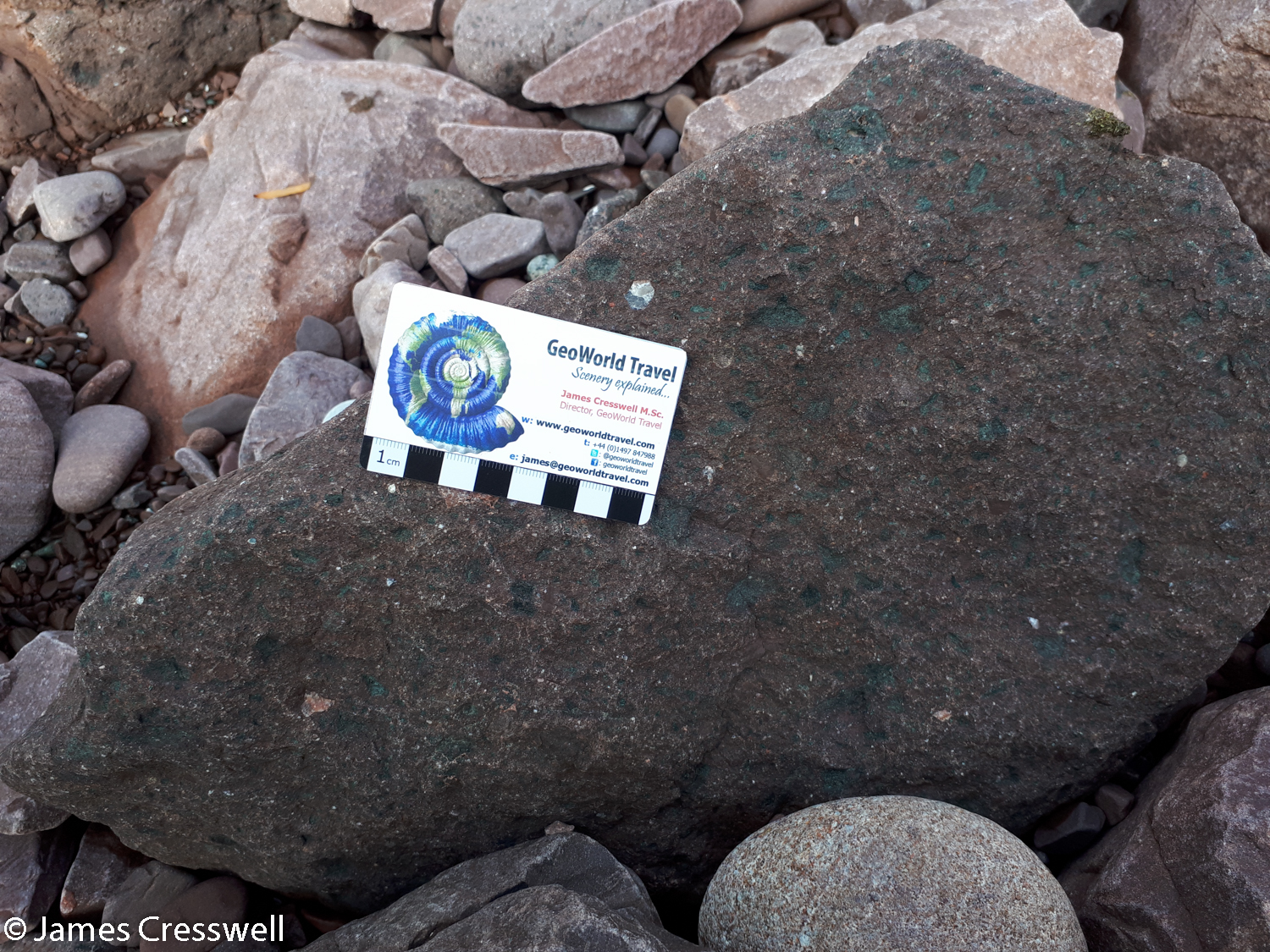










Please click on images to enlarge and to read the captions
Day 5
Today, after leaving Ullapool, we stopped at the stunning Corrieshalloch Gorge and the picturesque Eilean Donan castle before reaching the Isle of Skye. On the island, we took a trip with Misty Isle Boat Trips to Loch Coruisk and the Black Cuillin. These mountains are arguably the most dramatic in Britain and are the roots of a Paleogene volcano. The rock was once the magma chamber of the volcano and has since been sculpted by Ice Age ice into mountains and lochs. The rock we saw was layered bytonite gabbro containing xenoliths. We also saw peridotite in boulders and outcropping on the mountain above as well as dykes, glacial striations and erratics. On the boat out to the loch, we saw Common Seals and on the return journey, we saw Common Dolphins. In Elgol, where the boat departed from, we also saw Jurassic sandstone with honeycomb weathering and several dykes. The night was spent just outside Portree, the largest town on, and the capital of, the Isle of Skye.














Please click on images to enlarge and to read the captions
Day 6
Today was all about dinosaurs and volcanoes on the Isle of Skye. We went to 3 different dinosaur trackway sites. The dinosaur fossils and tracks from Skye are very important because they are from the mid Jurassic – a time period that is very poorly exposed and a time when there was a great radiation of dinosaur groups. At An Corran we saw tracks from a bipedal dinosaur, probably a type of Ornithopod, which were discovered in 2004. At Duntulm we saw a wonderful sauropod trackway that was only discovered in 2015 and shows multiple generations of the animals wading in a herd across a lagoon. The third site, at Rubha nam Brathairean (Brother’s Point), was only discovered in 2018 and has 50 sauropod tracks and a theropod footprint. Additionally, we visited the wonderful Staffin Museum. Amongst other things the museum contains dinosaur tracks and bones, all collected by local Paleontologist Dugald Ross. Dugie was there to greet us in the museum and gave us an explanation of many of the geological exhibits. In addition to the dinosaurs there was also plenty of vulcanology and geomorphology to be seen today. At the Quiraing, we saw Britain’s largest mass land movement – here Paleogene lava from the Skye volcano, which is up to 300m thick, has slipped on the weaker Jurassic sediments below. We also saw sills and columnar jointing. Our final stop of the day was in the Red Cuillin of the Skye volcano, where we compared and contrasted its granite magma chamber with the gabbro exampled of the Black Cuillin. We finished the day by taking the ferry from Skye to Mallaig, where we spent the night.
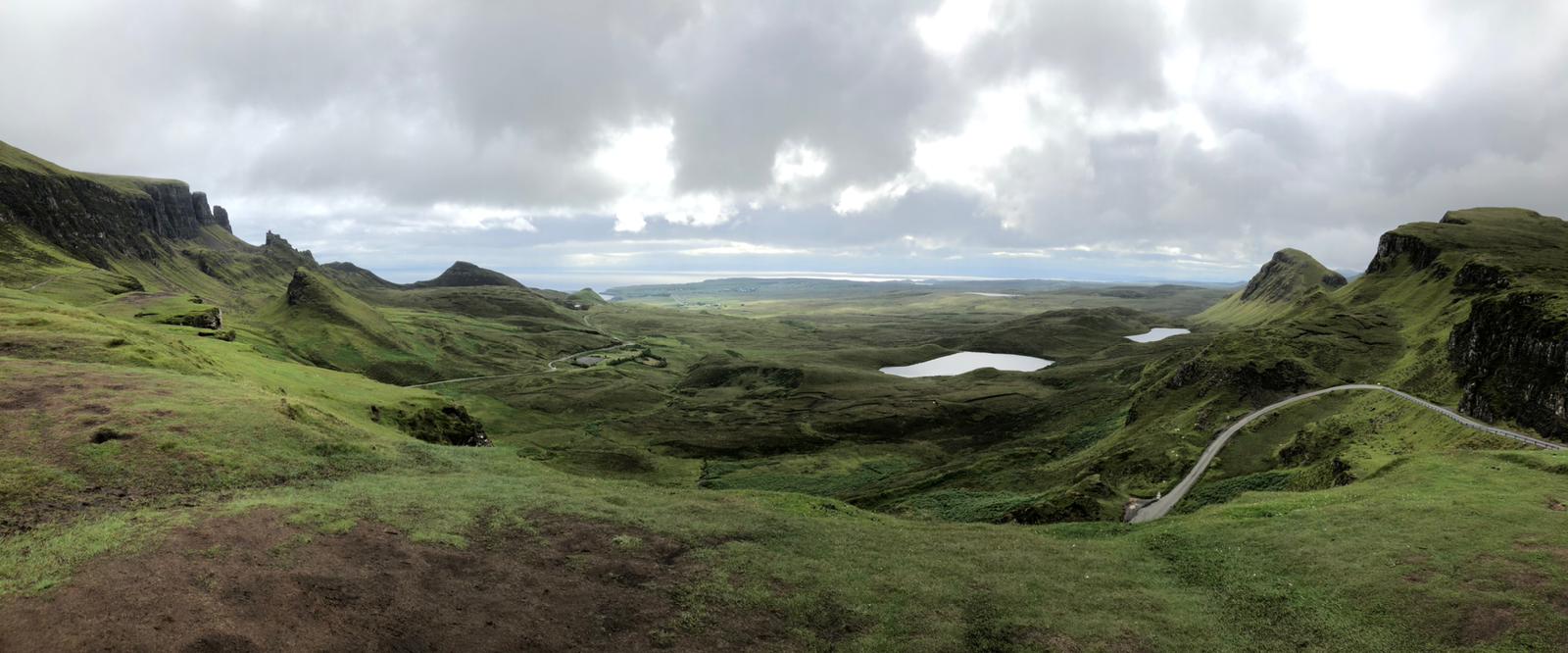









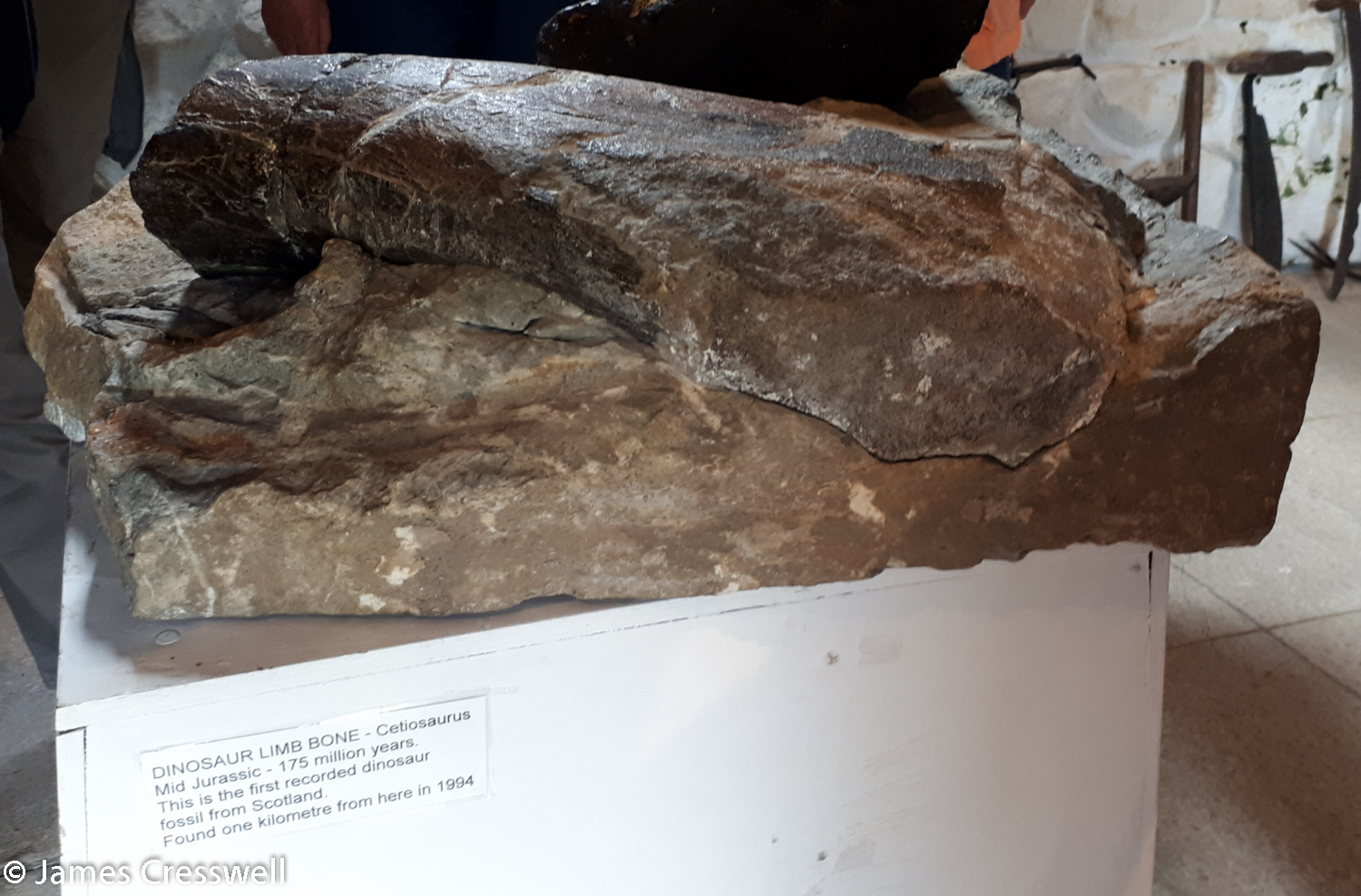



Please click on images to enlarge and to read the captions
Day 7
We started our day in the Lochaber Geopark, driving the length of the Ardnamurchan Peninsula to reach Kilchoan where we took Staffa Tour’s MV Angus boat to Staffa and Lunga. We were treated to absolutely glorious weather and stunning scenery on the boat journey to and from islands. On Staffa, we visited the world famous Fingals Cave and marvelled at the columnar basalt which formed from lava flows that flowed from the Mull volcano as the Atlantic begin to rift open in the Palaeogene. On Lunga, we hung out with the puffins and saw breeding guillemots, fulmars and kittewakes. Once back in the Lochaber Geopark, we visited the heart of the Ardnamurchan volcano and learnt the difference between ring dykes and cone sheets. The night was spent in the village of Strontian on the north shore of Loch Sunart. Strontian is the discovery site of the element Strontium.








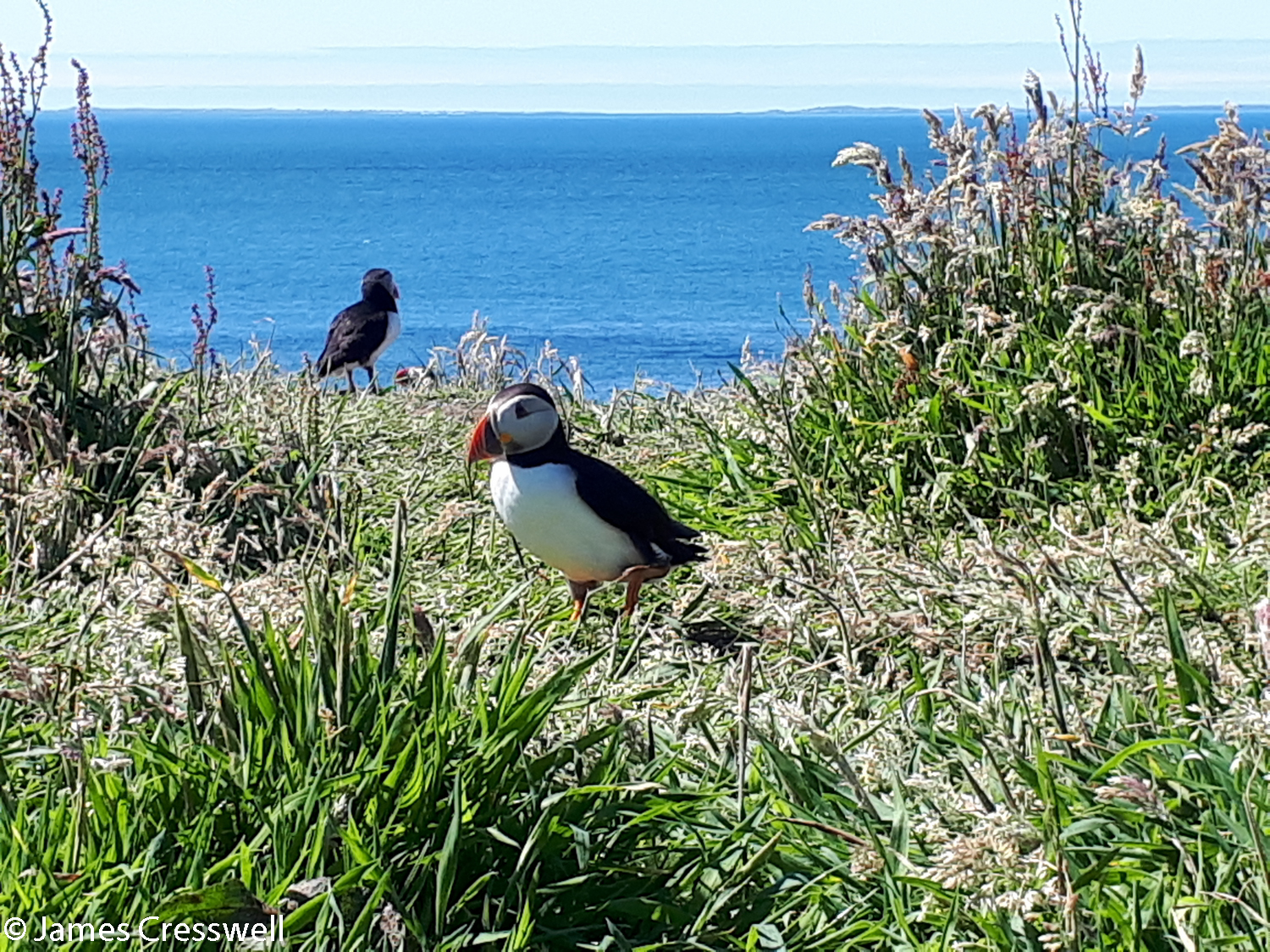

Please click on images to enlarge and to read the captions
Day 8
Today was the final full day of our geology tour of Scotland. During the course of the day we saw 3 volcanoes We started the day in the Lochaber Geopark, crossing the Great Glen Fault by the Corran Narrows ferry. We then visited the Ballachulish slate quarry, which roofed most of Edinburgh and Glasgow. Here, 650 million-year-old marine sediments were contact metamorphosed to slate in the Devonian by the Glencoe volcano. In the amazingly beautiful Glencoe, we saw sills, dykes, rhyolite lava flows and pyroclastic flow deposits in the sheer, glacially-eroded cliffs. We also learnt about the 1692 massacre and its important role in history. We then lunched at the Falkirk Wheel before returning to Scotland’s capital, Edinburgh. Here we had views of Edinburgh Castle and the glacially eroded volcanic vent it sits on. In Holyrood park we saw the vent of the Arthur’s Seat volcano and an important sill emanating from the volcano: Salisbury Crags, which includes the globally important geosite, Hutton’s Section (which is temporarily closed due to rock falls – but we got a distant view). All in all it’s been an awesome trip – thank you Scotland!







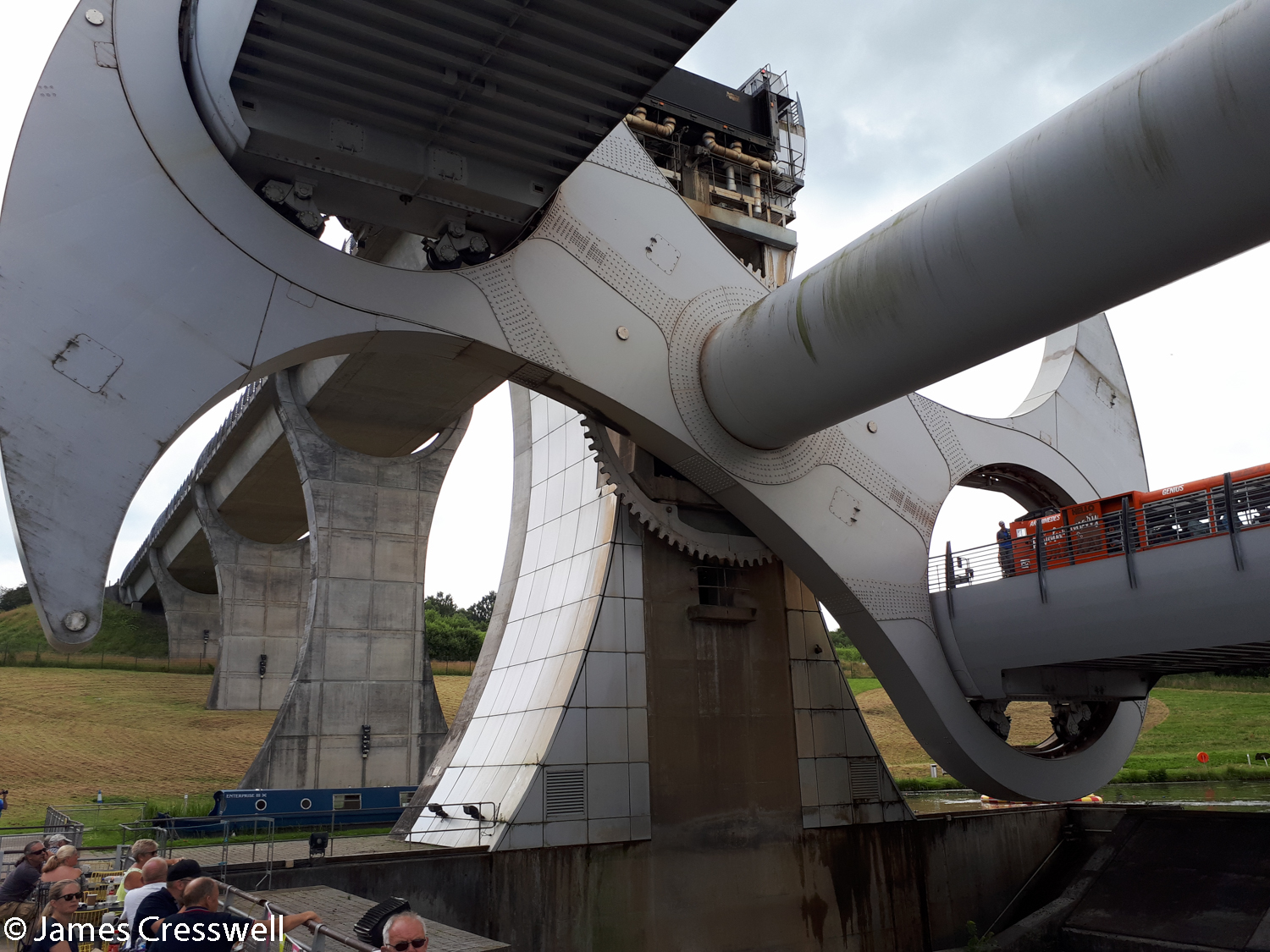



Please click on images to enlarge and to read the captions
Day 9
Today the tour ended after breakfast.


1 Comment